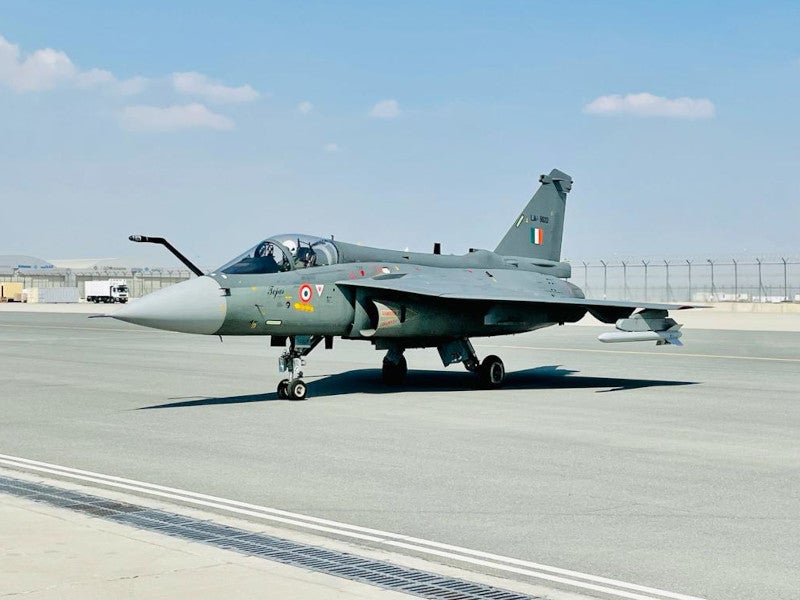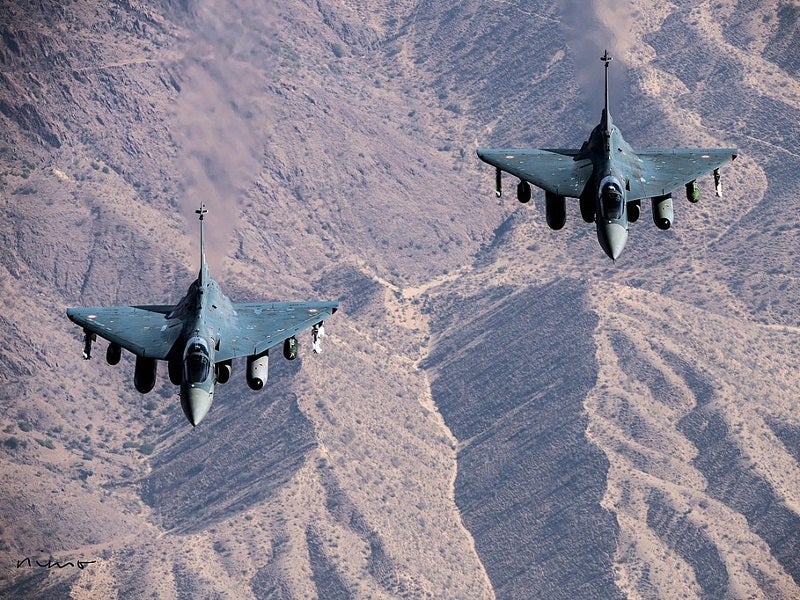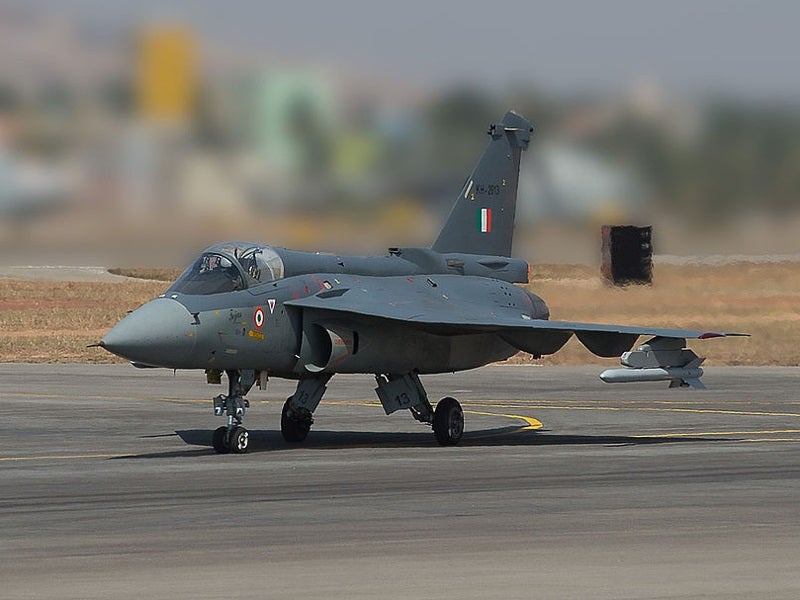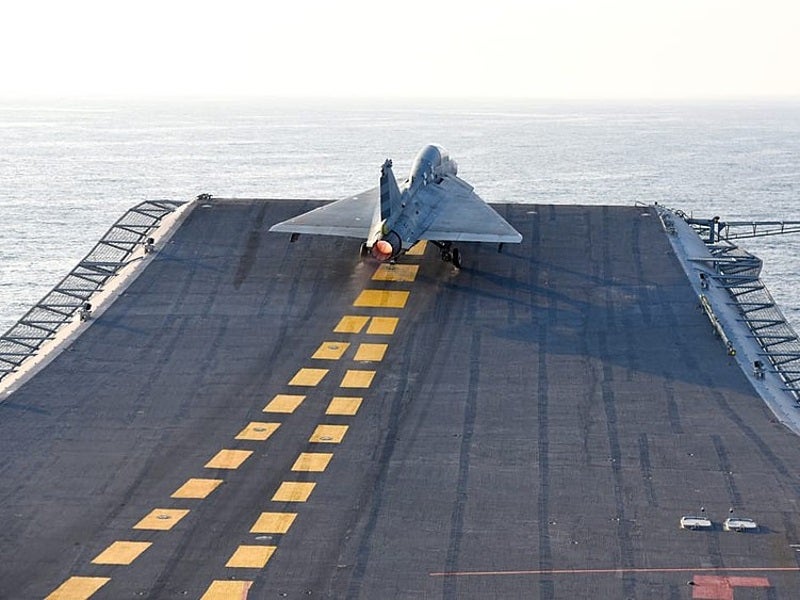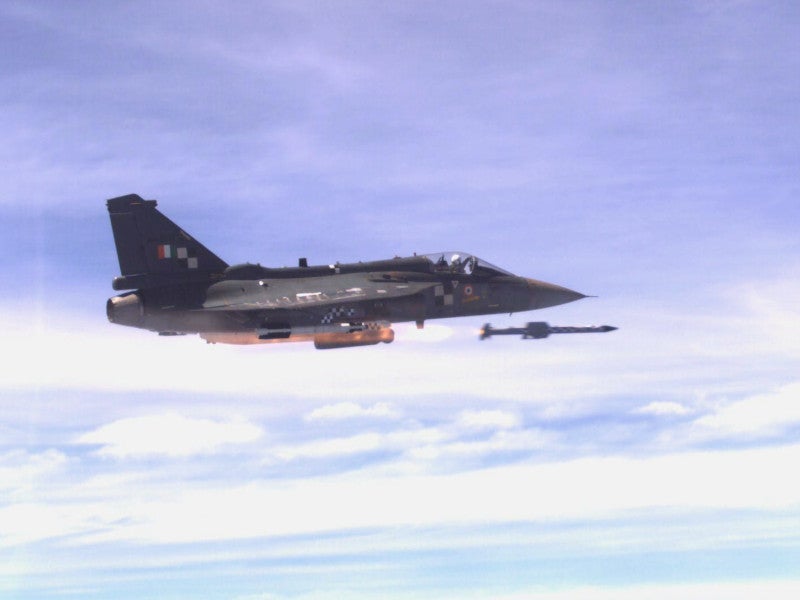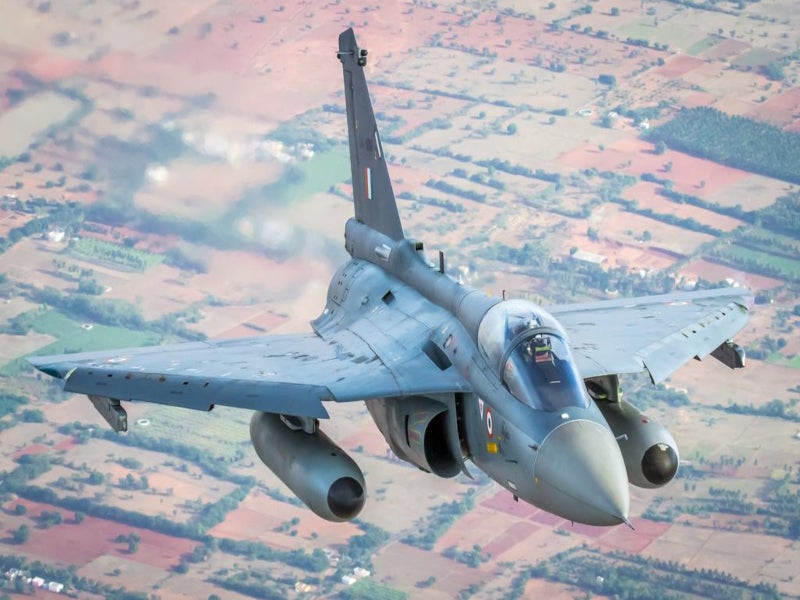Tejas Mark (Mk) 1 is a 4.5 generation, lightweight, high-agility supersonic multi-role fighter aircraft, which entered service with the Indian Air Force (IAF) in July 2016.
The Defence Research and Development Organisation’s (DRDO) Aeronautical Development Agency (ADA) led the design and development of the aircraft under the light combat aircraft (LCA) programme, with Hindustan Aeronautics Limited (HAL) working as the prime industrial contractor.
ADA signed a memorandum of understanding (MOU) with the IAF to integrate futuristic weapons and sensors in the Tejas aircraft in February 2024.
ADA handed over the first batch of indigenous leading-edge actuators and airbrake control modules to HAL in April 2024, marking a major step towards self-reliance in aeronautical technologies.
HAL is preparing to produce these units for the order of 83 Tejas Mk1A, the improved version of the Tejas Mk1, for production clearance.
Tejas aircraft development details
The first demonstrator aircraft within the LCA programme made its maiden flight in January 2001, followed by a second in June 2002.
The production version first soared in April 2007, with the trainer variant taking to the skies in November 2009.
Subsequent limited series production (LSP) models, notably the LSP-4 and LSP-5, achieved their inaugural flights in June and November 2010, respectively. The aircraft was certified in January 2011, after completing initial operational clearance (IOC) testing in December 2010.
Further advancements included the LSP-7 and LSP-8 prototypes, which flew in March 2012 and 2013, respectively.
Tejas successfully fired an infrared-seeking air-to-air missile in December 2013 and achieved the IOC status.
The prototype with an advanced electronic warfare (EW) suite developed by the DRDO also took flight during the period.
The first series-production aircraft flew in October 2014 and was delivered to the IAF in January 2015, with the second series-production (SP2) aircraft following in March 2016. The naval variant of Tejas made its first flight in April 2012 and completed a test on the INS Vikramaditya aircraft carrier in January 2020.
In July 2016, the IAF received the first two Tejas aircraft from HAL. The Tejas Mk1, in its final operational clearance (FOC) configuration, was inducted into service in May 2020. HAL completed the first flight of Tejas Mk1A in March 2024.
Tejas conceptual design flight trials
Tejas is an all-weather, tactical fighter, available in two variants, specifically single-seat fighter and two-seat training aircraft.
The design of a carrier-borne aircraft incorporating a modified nose, strengthened landing gear, and an arrestor hook, was approved in 1999. This version has retractable canards and adjustable vortex control.
The Indian Government initiated a development programme for carrier-borne versions of the Tejas in 2002, with the first flights of two prototype aircraft completed in 2009.
The IAF started the second phase of hot weather flight trials on the Tejas in June 2010. The trial examined the digital flight control computer, avionics systems, multimode radar, radar warning receiver (RWR) and the electrical and environmental control systems at up to 45°C temperature.
In August 2023, the Tejas LSP-7 prototype conducted a successful test firing of the indigenous Astra beyond visual range air-to-air missile (BVR-AAM) from an altitude of 20,000ft, off the coast of Goa.
The Tejas Mk1A programme achieved a milestone with the successful flight of LSP7 in February 2024, integrating the indigenously developed quadruplex digital fly-by-wire flight control computer (DFCC), featuring advanced processing capabilities and high safety standards.
Tejas Mk1 aircraft’s design and details
Tejas Mk1 has a delta platform design with shoulder-mounted delta wings. It features a fin but lacks a horizontal tail. The aircraft weighs approximately 5,450kg and has a maximum take-off weight of 13,500kg.
Lightweight materials, including aluminium, lithium and titanium alloys, and carbon composites, are used in the construction. The wing structure includes composite spares and ribs with a carbon fibre-reinforced plastic skin.
The aircraft is equipped with nine external hardpoints on the wings and fuselage to carry various equipment and weapons.
Additionally, it can carry EW, targeting, surveillance, reconnaissance, or training pods on the hardpoints.
The aircraft features wing and fuselage tanks, as well as an in-flight refuelling probe on the front starboard side for air-to-air refuelling in the Tejas Mk1A variant. Drop tanks with a capacity of up to 4,000l can be carried on the inner and mid-board wing and fuselage centreline hardpoints.
Cockpit of Tejas Mk1
The aircraft features a night vision-compatible glass cockpit with zero-zero ejection seats from Martin Baker (UK). It features dual 76mm × 76mm colour multifunction displays by Bharat Electronics, a head-up display by the government-owned Central Scientific Instruments Organisation (CSIO), and a liquid crystal return-to-home-base panel with a keyboard.
The cockpit also includes a helmet-mounted display and sight (HMDS) and a hands-on throttle and stick system to reduce pilot workload and increase situational awareness.
Tejas integrates a Sagem SIGMA 95N ring laser gyroscope inertial navigation system with GPS. Its communication suite comprises VHF to UHF radios with counter-countermeasures, data links for air-to-air and air-to-ground operations, and a HAL-developed friend-or-foe interrogator.
Additionally, the cockpit is fitted with an environmental control system from Spectrum Infotech. The comprehensive avionics suite includes a health-monitoring system, ground proximity and terrain-referenced navigation systems, instrument landing system, GPS, stores management system, and three 1553B 32-bit mission computers.
The secondary flight control, featuring leading-edge slats and airbrakes, utilises Servo valve-based electro-hydraulic actuators and control modules. An advanced cockpit design significantly enhances pilot comfort.
Weapons and countermeasures onboard Tejas Mk1
The Tejas features a 23mm twin-barrelled GSh-23 gun with a burst firing rate of 50 rounds a second and a muzzle velocity of 715m per second, installed in a blister fairing under the starboard air intake.
The aircraft can be armed with air-to-air missiles such as the Vympel R-73, as well as air-to-ground and anti-ship missiles, precision-guided munitions, rockets and bombs. The Derby BVR-AAM was purchased from Rafael Advanced Defence Systems to incorporate them on 200 aircraft. The Derby missile can engage targets at a range of 50km.
Sensors and radar of Tejas Mk1
Mounted in a Kevlar radome, the radar has multiple target search, track-while-scan and ground-mapping modes of operation. It includes pulse Doppler radar with Doppler beam shaping, moving target indication, and look-up/look-down capability.
The Mk1A sensor package includes airborne electronically scanned array (AESA) fighter radar technology and an EW suite, including a radar warning receiver and jammer, laser warner, missile approach warner, chaff and flare dispenser, digital map generator (DMG), smart multi-function displays (SMFD), combined interrogator and transponder (CIT), advanced radio altimeter and other advanced features.
Engine and performance
The aircraft is powered by GE Aerospace’s F404-GE-IN20 turbofan engine. The 154in engine produces a thrust of 19,000lb and 153lb/s airflow. It is also fitted with a HAL gas turbine starter unit model GTSU-110 for starting the engine, providing the necessary airflow and power to initiate the turbine engine’s startup sequence.
The aircraft can fly at a maximum speed of 1.6 Mach (1,975km/h) at a maximum altitude of 15,240m. It has a range of 3,000km.
Orders and deliveries
HAL received orders from the IAF for a total of 40 LCA Tejas, comprising 20 IOC and 20 FOC standard aircraft. The IOC contract, signed in March 2006, was valued at Rs28.1bn ($631m), with an amendment sought for Rs53.6bn ($1.2bn) for additional components. The FOC contract, signed in December 2010, was valued at a value of Rs59.8bn ($1.3bn).
The government also contracted HAL to provide 83 Tejas aircraft, including 73 Tejas Mk-1A fighter aircraft and ten Tejas Mk-1 trainer aircraft, at a value of Rs480bn ($6.5bn) in February 2021. All 83 aircraft will be delivered within eight years.
In October 2023, the IAF took delivery of the twin-seater LCA Tejas.
Tejas Mk2 version development
The Tejas Mk2 is being developed by ADA as a medium-combat aircraft, an advanced stealth version of the Tejas. It features two engines with fully vectoring nozzles and lacks a vertical or horizontal tail.
The first flight of the variant is expected in 2025. It is intended to replace the IAF Jaguar and Mirage 2000 fleet.
Contractors involved
HAL awarded a Rs24bn ($315.8m) contract to Bharat Electronics (BEL), a government-owned aerospace and defence company, to supply 20 varieties of airborne electronic systems to equip Tejas Mk1A in December 2021.
The aircraft’s EW suite was developed by the Advanced Systems Integration and Evaluation Organisation (ASIEO) based in India.
National Aerospace Laboratories (NAL) designed and produced the fin and the rudder, as well as constructed the aircraft fuselage.
Aeronautical Development Establishment (ADE), a laboratory of DRDO, developed the DFCC for the Tejas Mk1A while Electronics Research and Development Establishment, a laboratory of DRDO, and HAL jointly developed the aircraft’s multimode radar.
Saab, an aerospace and defence company based in Sweden, offered a sensor package for the Mk1A aircraft.

